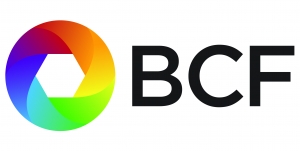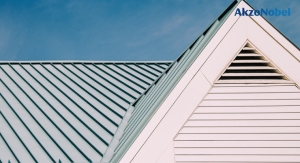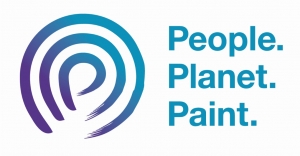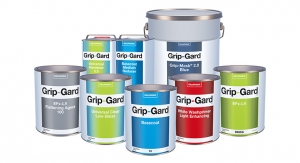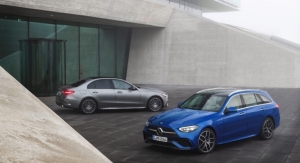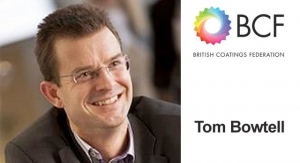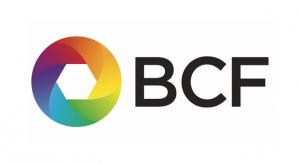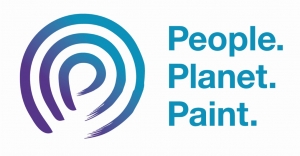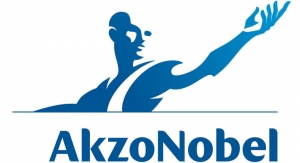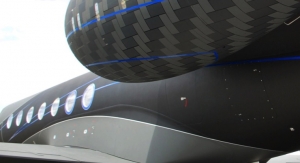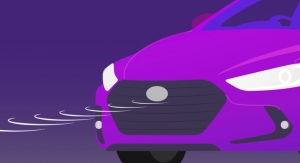05.31.17
Coatings World recently had the opportunity to discuss the aerospace coatings market with Matt Anzardo, Marketing Manager – North America, Specialty Coatings for AkzoNobel. The aerospace coatings market is currently valued at $1.42 billion and, according to recent estimates, is expected to grow at a CAGR of 6.9 percent through 2022 to $1.98 billion. To get some insight into this large global market, Anzardo shared his thoughts on a changes in this market, increased demands, and customer needs.
Coatings World: How do changes in the airline market (such as mergers) affect the market for aerospace coatings?
Matt Anzardo: The industry operates on thin profit margins and Airlines are constantly looking to manage costs or find a competitive advantage. So products such as our Aerobase and Aerodur Basecoat/clearcoat systems offer enhanced durability that reduce total cost of ownership and give Airlines the opportunity to enhance their brand image. Mergers present an opportunity for coatings, as it usually is followed by a re-branding program involving painting of new liveries and interior retrofitting of interiors. Product mix (Wide body vs narrow body) also impacts the coatings market, as it generally is proportional to the volume of coatings used. The growth of regional airlines to cater to growing passenger traffic, especially in Asia and the Middle East is also a positive contributor to the coatings market. AkzoNobel’s product offering enables airlines to enhance their brand recognition with the color and design capabilities of our systems.
CW: Has your company seen an increased demand for aerospace coatings?
Anzardo: The demand for coatings has increased in line with the increase in production rates at OEMs, and with the increase in the size of the global commercial aircraft fleet. AkzoNobel is the partner of choice for some of the largest airliners in the world, including American Airlines, United Airlines, and Emirates. We are the only supplier whose revolutionary Aerodure Basecoat-Clearcoat exterior system is qualified at every major OEM, including Boeing and Airbus. We are also actively developing our presence in the General Aviation market with our Alumigrip series of topcoats which has the best in class color offering across a broad range of effects, gloss finishes, and solar heat reflectance capabilities. These have contributed to a very healthy demand for our system offerings in the General Aviation market.
AkzoNobel is a large diverse coatings company where we are in the unique position to provide the customer with options using other technologies such as film, haptic (soft touch), and wood coatings that will complement our liquid paint offerings.
CW: What are your customers looking for in terms of performance? How have these needs changed over the last few years?
Anzardo: Painting an airplane is a multi-process activity and Airline companies strive to maximize the utilization of their aircraft assets by keeping them in the air as much as possible. Each day that an airplane is on the ground means a potential loss of hundreds of thousands of dollars in revenue. Thus paint process efficiency factors such as dry time, ease of application etc… are critical. Look and feel is also very important, as the livery is a key element of an airliner’s brand – so color accuracy and gloss retention are key performance factors.
Customers have similar performance requirements currently as over the past few years, but the environmental and health regulations have put a more emphasis on eco-premium technologies. Thus interest in water-borne, low VOC products that are friendly to use is a growing trend. Consequently, and as a result of regulatory requirements, there is now a concerted effort to develop chrome-free alternatives that offer the same corrosion resistance performance levels, without the health and safety concerns of current chrome based primers; AkzoNobel has been at the forefront of developing and commercializing chrome free primers for top coat or decorative applications along with the Aerodur Base Coat Clear Coat system that delivers the faster application process and longevity in the life of the coating, keeping the plane in service longer. There is also a trend in the use of new materials in aircrafts ranging from composites, carbon fibre, and thermoformed parts and we have a range of products and systems that work on different substrates that AkzoNobel can provide to all of our customers.
CW: What are the latest aerospace coatings your company has launched?
Anzardo: AkzoNobel has always put innovation at the forefront of its mission. Our innovation is focused on developing products that enhance the protection, appearance and functionality of our customer’s assets. We have launched new exterior decorative paint systems that use chrome free primers and fast dry, highly durable basecoat/clearcoat systems that last up to two times longer than traditional paint systems. These systems are approved to all major OEM specifications. We will soon launch a line of water based interior cabin coatings that offer superior burn properties, stain resistance and ease of application. We are also working on film technologies to replace liquid coatings. These films can be used on cabin parts due to their inherent burn resistant properties, and on composite parts to significantly reduce labor costs and weight. We will also launch a next generation topcoat that cures with UV radiation providing almost instant curing, allowing our customers to increase efficiency and reduce process times. We constantly investigate and monitor technologies developed for our other markets (such as automotive and electronics) that may offer benefits to our aerospace customers. For example, our basecoat/clearcoat technologies were derived from our automotive business. Other potential technologies include inorganic binders, stain and finger print resistant coatings, and waterproof coatings.
Coatings World: How do changes in the airline market (such as mergers) affect the market for aerospace coatings?
Matt Anzardo: The industry operates on thin profit margins and Airlines are constantly looking to manage costs or find a competitive advantage. So products such as our Aerobase and Aerodur Basecoat/clearcoat systems offer enhanced durability that reduce total cost of ownership and give Airlines the opportunity to enhance their brand image. Mergers present an opportunity for coatings, as it usually is followed by a re-branding program involving painting of new liveries and interior retrofitting of interiors. Product mix (Wide body vs narrow body) also impacts the coatings market, as it generally is proportional to the volume of coatings used. The growth of regional airlines to cater to growing passenger traffic, especially in Asia and the Middle East is also a positive contributor to the coatings market. AkzoNobel’s product offering enables airlines to enhance their brand recognition with the color and design capabilities of our systems.
CW: Has your company seen an increased demand for aerospace coatings?
Anzardo: The demand for coatings has increased in line with the increase in production rates at OEMs, and with the increase in the size of the global commercial aircraft fleet. AkzoNobel is the partner of choice for some of the largest airliners in the world, including American Airlines, United Airlines, and Emirates. We are the only supplier whose revolutionary Aerodure Basecoat-Clearcoat exterior system is qualified at every major OEM, including Boeing and Airbus. We are also actively developing our presence in the General Aviation market with our Alumigrip series of topcoats which has the best in class color offering across a broad range of effects, gloss finishes, and solar heat reflectance capabilities. These have contributed to a very healthy demand for our system offerings in the General Aviation market.
AkzoNobel is a large diverse coatings company where we are in the unique position to provide the customer with options using other technologies such as film, haptic (soft touch), and wood coatings that will complement our liquid paint offerings.
CW: What are your customers looking for in terms of performance? How have these needs changed over the last few years?
Anzardo: Painting an airplane is a multi-process activity and Airline companies strive to maximize the utilization of their aircraft assets by keeping them in the air as much as possible. Each day that an airplane is on the ground means a potential loss of hundreds of thousands of dollars in revenue. Thus paint process efficiency factors such as dry time, ease of application etc… are critical. Look and feel is also very important, as the livery is a key element of an airliner’s brand – so color accuracy and gloss retention are key performance factors.
Customers have similar performance requirements currently as over the past few years, but the environmental and health regulations have put a more emphasis on eco-premium technologies. Thus interest in water-borne, low VOC products that are friendly to use is a growing trend. Consequently, and as a result of regulatory requirements, there is now a concerted effort to develop chrome-free alternatives that offer the same corrosion resistance performance levels, without the health and safety concerns of current chrome based primers; AkzoNobel has been at the forefront of developing and commercializing chrome free primers for top coat or decorative applications along with the Aerodur Base Coat Clear Coat system that delivers the faster application process and longevity in the life of the coating, keeping the plane in service longer. There is also a trend in the use of new materials in aircrafts ranging from composites, carbon fibre, and thermoformed parts and we have a range of products and systems that work on different substrates that AkzoNobel can provide to all of our customers.
CW: What are the latest aerospace coatings your company has launched?
Anzardo: AkzoNobel has always put innovation at the forefront of its mission. Our innovation is focused on developing products that enhance the protection, appearance and functionality of our customer’s assets. We have launched new exterior decorative paint systems that use chrome free primers and fast dry, highly durable basecoat/clearcoat systems that last up to two times longer than traditional paint systems. These systems are approved to all major OEM specifications. We will soon launch a line of water based interior cabin coatings that offer superior burn properties, stain resistance and ease of application. We are also working on film technologies to replace liquid coatings. These films can be used on cabin parts due to their inherent burn resistant properties, and on composite parts to significantly reduce labor costs and weight. We will also launch a next generation topcoat that cures with UV radiation providing almost instant curing, allowing our customers to increase efficiency and reduce process times. We constantly investigate and monitor technologies developed for our other markets (such as automotive and electronics) that may offer benefits to our aerospace customers. For example, our basecoat/clearcoat technologies were derived from our automotive business. Other potential technologies include inorganic binders, stain and finger print resistant coatings, and waterproof coatings.

